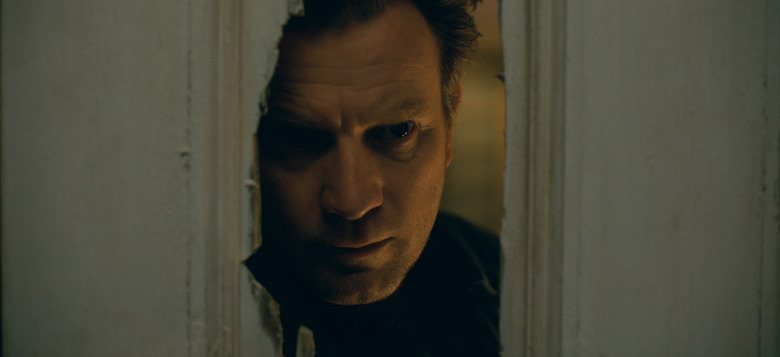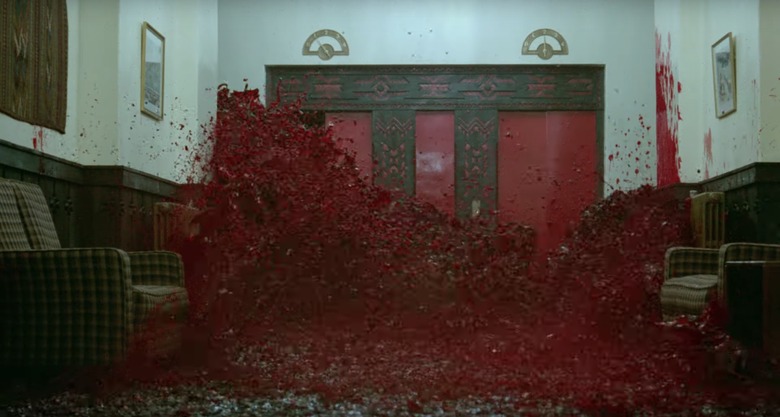'Doctor Sleep' Director Explains How He Got Approval From Both Stephen King And The Kubrick Estate [Q&A]
Mike Flanagan, the director of Oculus, Hush, Gerald's Game, and The Haunting of Hill House, has crafted plenty of cinematic moments that have left audiences with their hearts pounding. But his upcoming film Doctor Sleep, which is both an adaptation of Stephen King's sequel to The Shining and a continuation of the story told in Stanley Kubrick's 1980 horror classic, gave Flanagan "the two most nerve-wracking moments of [his] entire career" – getting approval from both King himself and Kubrick's estate.
That's no small feat, considering King's opinion about Kubrick's movie, and in a Q&A in West Hollywood yesterday afternoon, Flanagan and his producer Trevor Macy talked about striking that balance, recreating some of Kubrick's iconic visuals, and much more.
Doctor Sleep Q&A
Warner Bros. invited us to a trailer premiere yesterday before it was unveiled to the public this morning, and Flanagan answered some questions from a moderator and a small group of journalists about his experience working on this movie, how it's all about cycles of addiction and recovery, and much more.
I've covered a lot of these Q&As in my career, but this was the first time I've walked away from one thinking that the entire discussion was so good, that readers need to experience it. So while I did transcribe some of Flanagan's answers below for those who don't have a lot of time, I decided to publish the full audio from the Q&A so you can hear him talk about the film yourselves. He's an incredibly smart guy who knows his shit when it comes to King and Kubrick, and I was so impressed with how he handled all of these questions that I wanted you all to be able to experience the same thing I did.
Below, you can read some sections of the Q&A that I transcribed. All answers come from Flanagan.
Why The Film is Called Doctor Sleep
Danny, since the events at the Overlook, has not used his shine. He's tried to bury it because of the danger he thinks it put him and his family in when he was a kid. But he takes a job as an orderly at a hospice, and he finally starts to use the shining just a little bit to try to comfort patients in the moment before they die. He's able to understand they're about to die, he sits with them and helps them move on. It's actually a very lovely and empathetic part of the book. Because of this, he's developed a nickname and a reputation around the hospice. The patients know that if he shows up in your room late at night sitting by the bed, it's because it's over, it's time to go to sleep. So they call him Doctor Sleep, that's his nickname in the hospice.
What I thought was pretty great about it when I read the book, was that as a lot of you probably know, his nickname as a child was "Doc." That was all from Bugs Bunny cartoons in The Shining. I love that King was able to make it so that the abbreviations that the patients would deal with him under was still "Doc." That gave a whole new context to that nickname, and I thought that was a really interesting way of recontextualizing how he was referred to as a kid.
Addiction and Recovery
Not surprisingly, the events that occurred at the Overlook scarred him pretty completely. Yes, he is also prone to the same alcoholism that his father had. The novel picks him up at rock bottom, in the throes of that addiction and trying to overcome it and carries him through his recovery. I think in a lot of ways, The Shining is about alcoholism and Doctor Sleep is actually about recovery. They go together pretty well that way.
Is This Movie a Sequel to King's Novel or Kubrick's Film?
It's the most common question we've had since the project was announced, and the question we couldn't really answer until we had material to present, because the answer's really complicated. The answer to all of those questions for us has always been "yes." It is an adaptation of the novel Doctor Sleep, which is Stephen King's sequel to his novel, The Shining. But this also exists very much in the same cinematic universe that Kubrick established in his adaptation of The Shining, and reconciling those three at times very different sources has been the most challenging and thrilling part of this, creatively, for us.
Striking The Balance Between The Two
I went back to the book first, and the big conversation was whether or not we could still do a faithful adaptation of the novel as King had laid it out while inhabiting the universe that Kubrick had created, and that was a conversation we had to have with Stephen King to kick the whole thing off. If that conversation hadn't have gone the way it went, we wouldn't have done the film. As a lot of you know, Stephen King's opinions about the Kubrick adaptation are famous and complicated – to the point where, if you've read the book, you know that he actively and intentionally ignored everything that Kubrick had changed about his novel, and kind of defiantly said, "Nope, this exists completely outside of the Kubrick universe." So the first conversation we had to have, other than that we as fans of King and apostles of The Shining, really needed to try to bring those worlds back together again, we had to go to King and explain how. Some of that amounts to very practical questions about certain characters who are alive in the novel The Shining who are not alive by the end of the film, how to deal with that. And in particular, how to get into the vision of the Overlook that Kubrick had created. Our pitches to Stephen went over surprisingly well, and we came out of the conversation with not only his blessing to do what we ended up doing, but his encouragement.
This project, for me, has had the two most nerve-wracking moments of my entire career. The first was sending the first draft of the script to Stephen King. That was utterly terrifying, but thankfully he really loved it. And the second was, very recently in this post production process, when the film was sent to Stephen to watch and also to the Kubrick estate. Both went very well. That was always the hope going in, if there was some universe in which Stephen King and the Stanley Kubrick estate could both love this movie, that is the dream. Threading that needle has been the source of every ulcer we've had for the last two years.
How Much Footage From The Trailer Was Taken From Kubrick's Film?
What you've seen today in the more iconic imagery that's been on the screen, that isn't taken from the Kubrick film. There's only one shot in the trailer you saw that's actually his footage, and that's the shot of the bloody elevators. Everything else is us. Everything else is our recreation. I don't want to spoil to what extent, outside of what you've already gotten to see, what we've been able to revisit from Kubrick's world, but I can say that everything we decided to use, our attention was always to detail and reverence and making sure we were doing it properly, with the hope that even the most rabid cinephiles might not be able to tell the difference between some of our frames and some of his. That's always been the goal. We were able to do that with the full support of the Kubrick estate, who were willing to provide us with his plans.
At the End of the Day, Doctor Sleep is Its Own Story
The more we talk about King and The Shining, absolutely, that's a big part of this for us. But the story itself, though – and those of you who have read the book, you know – the story that we're telling primarily is its own thing, and it has everything to do with [characters] Dan and Abra. In the same way that Dan the character is permanently influenced and altered by the events of The Shining, so is our movie to an extent. But the divide is also just as great: he's decades removed from those events, and so are we. While it's definitely an element of the movie, the heart and soul of the movie, and the reason we wanted to make it at all, was really about this new story between Dan and Abra.
***
Doctor Sleep arrives in theaters on November 8, 2019.


